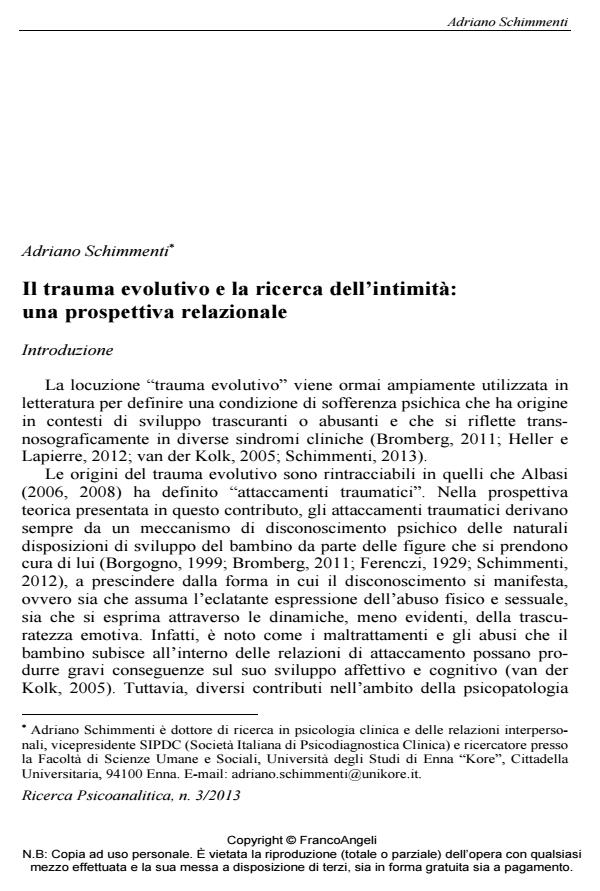Developmental trauma and the search for intimacy: a relational purview
Journal title RICERCA PSICOANALITICA
Author/s Adriano Schimmenti
Publishing Year 2014 Issue 2014/1
Language Italian Pages 23 P. 31-53 File size 677 KB
DOI 10.3280/RPR2014-001004
DOI is like a bar code for intellectual property: to have more infomation
click here
Below, you can see the article first page
If you want to buy this article in PDF format, you can do it, following the instructions to buy download credits

FrancoAngeli is member of Publishers International Linking Association, Inc (PILA), a not-for-profit association which run the CrossRef service enabling links to and from online scholarly content.
Developmental trauma is a condition of psychological vulnerability deriving from experiences of abuse and neglect in early attachment relations. Developmental trauma negatively affects the Self and the relations: subjects exposed to such experiences can organize their personality around pathological dissociation, in order to avoid that painful mental states related to early traumatic attachments reach consciousness. Pathological dissociation, in turn, prevents the maturation of the ability to regulate affects and to mentalize that is crucial for the development of a sense of oneself as related to the world. Patients who suffered developmental trauma are therefore often trapped in the "hedgehog dilemma", suspended between the wish for relational reparation of the wounded areas of their self and an intense fear of rejection, abuse and abandonment. This is reflected in clinical relations, since for these patients the search for intimacy is constantly threatened by fears and negative representations of themselves and others. This fear often leads them to act as if they wilfully wanted to damage the therapeutic relation, which leads to an increased feeling of lack of connection with the others. This problem is central in the treatment of patients who suffered a developmental trauma and requires from the clinician an extension of the boundaries of treatment with a deep participation in the search for intimacy in the therapeutic relation, also through enactments that in this context must be seen as possible sources of clinical knowledge and therapeutic action.
Keywords: Developmental trauma, dissociation, intimacy, enactment
Adriano Schimmenti, Il trauma evolutivo e la ricerca dell’intimità: una prospettiva relazionale in "RICERCA PSICOANALITICA" 1/2014, pp 31-53, DOI: 10.3280/RPR2014-001004